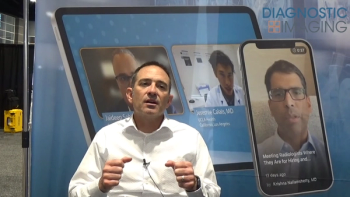
Size and trajectory matter most in lung RF ablation
As lung radiofrequency ablation increases in use, researchers are identifying factors that produce two of the most common complications: tumor recurrence and pneumothorax.
As lung radiofrequency ablation increases in use, researchers are identifying factors that produce two of the most common complications: tumor recurrence and pneumothorax.
Dr. Alice Gillams and Dr. William Lees from University Hospital London found that tumor size and location have the biggest impact on recurrence, while the number of tumors and the anticipated electrode trajectory influence the rate of pneumothorax. They reported their findings at the 2007 European Congress of Radiology.
In their retrospective review (which won first prize in the interventional section), researchers found that recurrence was more common in larger tumors (mean 2.6 cm) and those centrally located and in tumors smaller than 3.5 cm treated with expandable electrodes. A peripheral location-within 5 mm of the pleura, for example-was significantly associated with lower rates of recurrence.
Factors associated with pneumothorax following lung biopsy are well described, but they don't necessarily apply to RFA because larger electrodes, multiple electrode positions, long dwell times, and, often, the need to target multiple tumors are necessary, Gillams said. In a second retrospective review, the U.K. reasearcher found that the length of electrode trajectory through aerated lung, number of tumors ablated, and number of electrode positions were the most significant factors influencing pneumothoraces. While the number of patients with emphysema was small, 67% of these patients developed pneumothorax.
"Pneumothorax is a common side effect of doing this procedure, but it doesn't have to be a scary complication," Gillams said. "Most interventional radiologists have an aspiration needle or drainage catheter at the ready. But if you're treating a patient with many tumors, or one with a lot of aerated lung to cross, you can anticipate a high risk of pneumothorax."
Newsletter
Stay at the forefront of radiology with the Diagnostic Imaging newsletter, delivering the latest news, clinical insights, and imaging advancements for today’s radiologists.




























